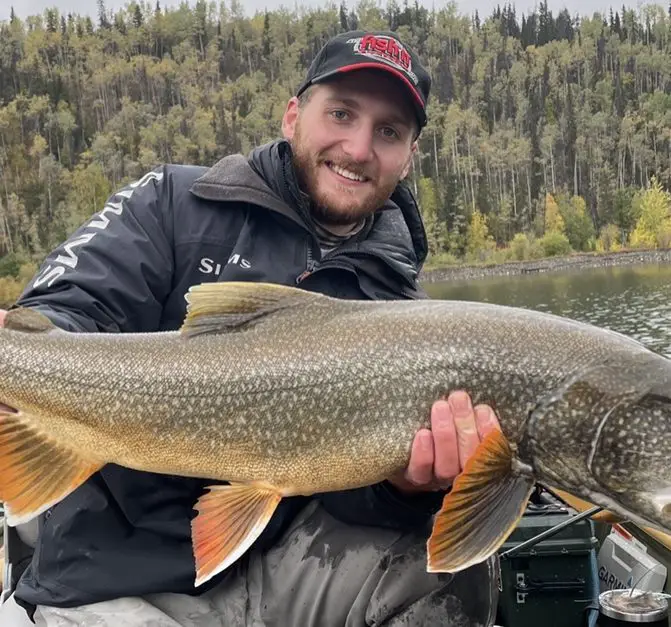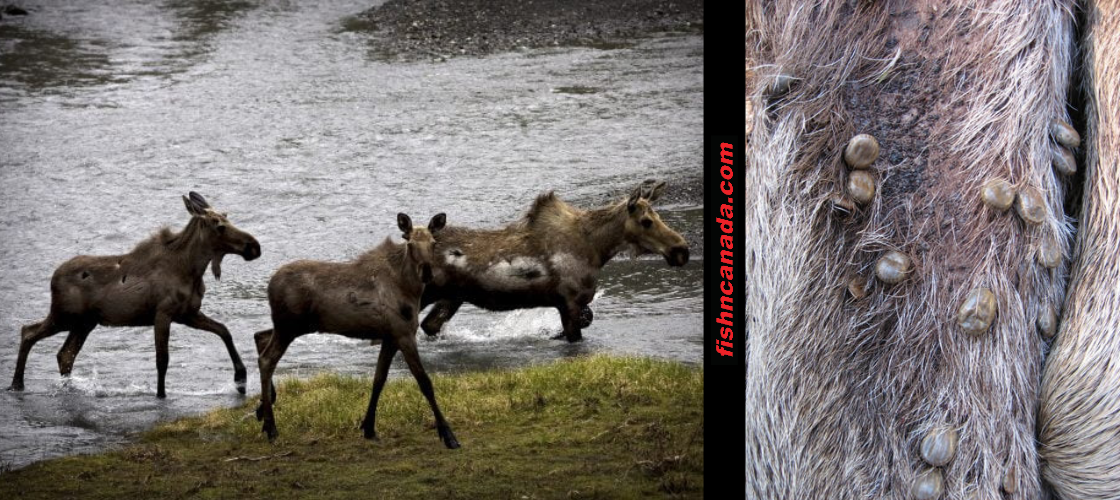Ticks have become a hot-button issue here in the north as they have slowly made their way up into the areas in which we recreate. As someone who grew up fishing and hunting in northern Ontario, I vividly remember walking barefoot through the woods to check minnow traps and trekking carefree through tall grass when hunting turkeys – not once wearing bug spray, and not once thinking about ticks.
Today, it is hard to rifle through a woodpile without finding at least one and our summers are now full of news stories dedicated to their spread throughout the north.
Despite their constant coverage, however, humans are not the only ones suffering from this parasite’s northern migration. In fact, in comparison to some animals, we are just minorly inconvenienced.
Declining Moose Populations
It is no secret that moose numbers have been dropping throughout North America. In parts of Minnesota, numbers have fallen into the hundreds. In 2017, Ontario’s moose numbers were reported to have fallen by nearly 20%. And, in much of New England, 40% of the moose population has been lost in the last decade.
These numbers are a direct result of low survival rates amongst calf populations. In Vermont, for example, wildlife biologist Josh Boulin, in an interview with Wired, identified that only 66% of calf moose are surviving their first 60 days. More disturbingly, less than half of these surviving calves are making it through their first winter. Here in Ontario, numbers are not much better with only around 55% of calves making it through to see the spring.
But why are these numbers so low?
While many often point to habitat degradation and overhunting as culprits for these plummeting numbers (justifiably so, in some circumstances), one of the more significant causes is hiding in plain sight – Winter Ticks.
What Are Winter Ticks?

The Winter Tick (Dermancentor albipictus) is an exceptionally large species of tick that, as the name would suggest, is most active during the winter. These are a separate species from the Deer and Wood Ticks that we typically hear about but their behaviour is just as disturbing.
Unlike other species of ticks that jump from host to host, Winter Ticks grow from nymph to adult while hitching a ride on just one animal. The ticks begin this ride in the fall when they patiently wait on tall grasses and low-hanging vegetation for a susceptible host to brush by. Once onboard, the ticks then crawl around the animal until they find a soft, warm entry point in which they can dig-in and start their 5-month long vampiric feeding session.
Although this single-host loyalty does stop the spread of diseases, such as Lyme, the tick’s long ride can drain animals of enough blood to cause death, especially when they are joined by thousands of their friends.
“Thousands” is no overstatement when talking about these particular parasites as Winter Ticks operate in exceptionally large groups and mature moose have been found to have over 70,000 ticks attached to their bodies. This occurs thanks to an ant-like cluster formed by the interlocking ticks as they grab onto the warm-bodied host and form a ladder for hundreds of others to find their way onto the animal at one time.
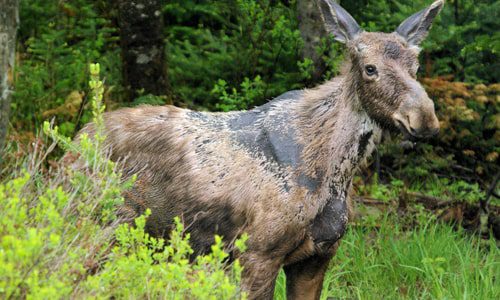
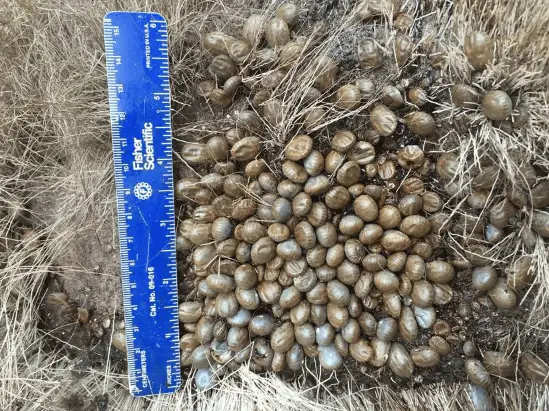
Since these ticks are most active during the spring and fall, rutting moose are the primary victim.
A study carried out in 1991 determined after examining moose populations from three different provinces that the average moose carries 32,527 ticks over the winter. In adult moose, these infestations primarily cause premature shedding of winter coats and substantial hair loss throughout the body.
As an anecdote, I have personally seen near-balding moose when attending school in Northern BC when, just outside the window of our gym, moose would rub themselves along the jagged bricks of the building to get relief from the persistent parasites.
Though hair loss can be deadly to adult moose during exceptionally cold winters, the real effects are felt by the calves as these smaller-bodied animals simply cannot support the 5 months of blood loss and often parish before the spring.
Why Have Ticks Gotten So Bad?
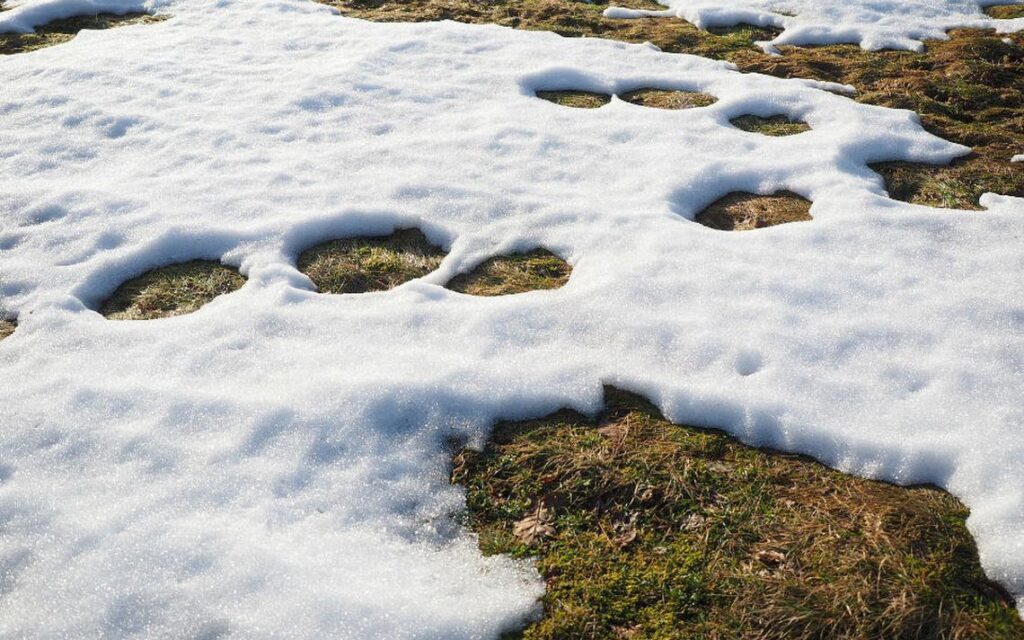
The relationship between Winter Ticks and moose is not a new one, however, the balance has certainly begun to shift and the areas in which they are forced to cohabitate are growing more and more north. Climate change is the primary cause of this unbalanced relationship as our short, mild winters are no longer providing the harshness necessary to level out the populations.
After a full winter of feeding, Winter Ticks mate on their host in April, before dropping to the ground to lay their eggs. Like salmon, these ticks die shortly after reproducing and leave the future of the populations up to the unhatched eggs.
In colder years, when April would still see snow scattering the ground, the survival rate of the eggs was comfortably low and populations would balance. Now, however, when eggs are hatched onto the wet, mild grounds of our modern springs, survival rates are substantially high and thousands upon thousands of ticks hatch and wait for their fall hosts.
How Hunters Can Help
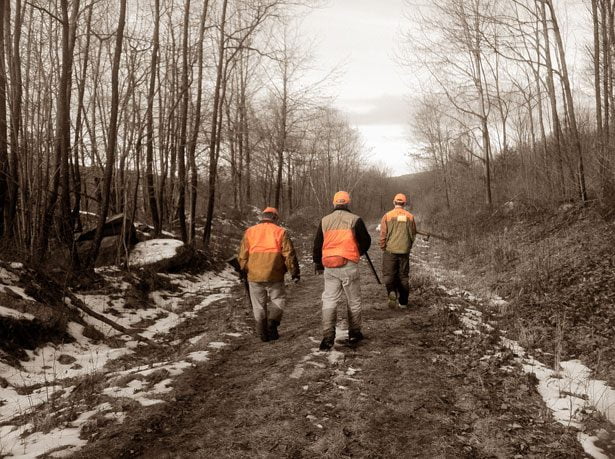
Hunting is often left out of the conversation when it comes to managing struggling populations, but research actually suggests it should have a role.
According to the government of Maine, hunting is one of the best tools to combat the surge in Winter Tick populations as it effectively manages moose density and gives tick populations less chance at survival. While moose numbers may be low across the board, it does not mean they are uniformly so and areas with exceptionally high densities have the potential to become tick breeding grounds. To avoid this, governments, including here in Ontario, adjust seasons according to the moose densities in each WMU to ensure the desired amount of animals are being harvested based on the needs of each region.
Hunters also have a role at the individual level. Obviously, there is very little that a hunter can do about a changing climate, but we can at least do our part by making decisions that benefit the struggling populations.
Letting calves remain in the woods is perhaps the best thing we can do as we nudge the populations back towards recovery. This is, thankfully, now law in Ontario, and will hopefully be coming down the pipe in the near future for areas that still allow unregulated calf hunts.
References
Jones, H., Pekins, P., Kantar, L., Sidor, I., Ellingwood, D., Lichtenwalner, A., & O’Neal, M. (2019). Mortality assessment of moose (Alces alces) calves during successive years of winter tick (Dermacentor albipictus) epizootics in New Hampshire and Maine (USA). Canadian Journal of Zoology, 97(1), 22-30.
Patterson, B. R., Benson, J. F., Middel, K. R., Mills, K. J., Silver, A., & Obbard, M. E. (2013). Moose calf mortality in central Ontario, Canada. The Journal of wildlife management, 77(4), 832-841.
Samuel, W. M., & Welch, D. A. (1991). Winter ticks on moose and other ungulates: factors influencing their population size. Alces: A Journal Devoted to the Biology and Management of Moose, 27, 168-182.



